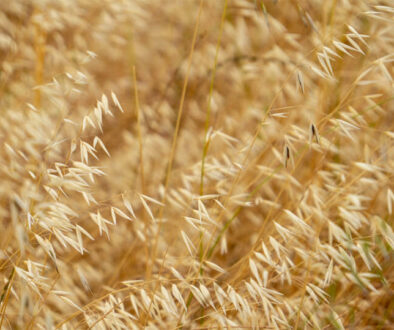October 2020 eNewsletter
More good news
By Jason Skotheim, SaskBarley Chair
Happy Thanksgiving season everyone!
We continue to have lots to be thankful for at SaskBarley.
Things continued to look good as we finished our fiscal year.
As of early October, Peter Watts from the CMBTC called this year’s malting barley crop the best he had seen in six years, with high test weights, plump kernels, low levels of fusarium and chitting and protein levels in the 11-13.5% range.
As for yields, Statistics Canada estimates an average of 69.1 bushels/acre, which would make it the fifth highest on record.
Some more good news – this fall our team at SaskBarley is growing. Mitchell Japp, formerly the Provincial Cereals Crop Specialist with Saskatchewan Agriculture, will officially join our team as Research and Extension Manager November 1. We could not have wished for a better addition. Learn more about him and his vision for the new role in our fall newsletter, which should be hitting your mailbox next month.
It’s also a good time of year for a reminder about malting barley specs for moisture and protein levels, so we have included an overview of that below. And if you would like even more information about this, we are offering a virtual version of Malt Academy Saskatchewan this year, on Friday November 13. This course is free for registered Saskatchewan barley producers and members of Saskatchewan’s barley industry. To learn more and register, visit the SaskBarley events page.
This month is Agriculture Month in Saskatchewan. To celebrate, we worked with the team at Canadian Food Focus to create some content to showcase how wonderful barley is to consumers. See some of this content linked below.
Finally, we recently made the difficult decision to cancel CropSphere 2020. We will be holding our AGM virtually on January 12, 2021 – in conjunction with AGMs for the other CropSphere host groups. Details on how to register, vote, and submit resolutions will be available in November.
We will also have our fall newsletter and 2019/20 annual report available in coming weeks so watch for those.
Malting barley specs for moisture and protein levels
An overview of malting barley specs for moisture and protein levels
When it comes to malt barley specifications, we know that moisture and protein levels are important.
Malt buyers are increasingly looking for certain specs to meet the needs of the end-use markets they are selling to.
Here’s an overview for farmers of some considerations when it comes to moisture and protein levels.
Moisture levels
Canadian malting barley is typically exported with a specification of maximum of 13.5% moisture content.
Excessive moisture can have a negative impact on malting barley quality during storage and transportation, particularly with respect to germination energy, which maltsters would like to exceed 95% for processing.
As a result, grain companies will likely require that farmer deliveries of malting barley not exceed 13.5% moisture this year.
Protein levels*
Buyers are currently different looking for levels of protein for malting barley, depending on the brewing segment the barley is destined for.
Generally speaking, major brewers use supplements such as corn or rice in addition to barley malt. Because of this, they prefer higher protein content in the barley (11-13%), which provides the enzymes necessary to break down the starches into sugars. The higher protein in the barley also breaks down the free amino nitrogen (FAN), which feeds the yeast during fermentation.
In contrast the craft brewers generally want lower protein content (10-11.5%), as they get sufficient protein from the barley malt and don’t need the extra FAN (too much FAN can negatively impact yeast performance).
Producers with contracts, often with the domestic malting companies, will generally be given a range of desired protein, outside of which discounts may apply.
Malting barley grown without a contract is generally headed for the export market, in which case producers should target a range of 11-13.5% protein.
*The protein contents cited are on a 13.5% moisture basis.
Target malting barley parameters
Seven ways to cook with beer this fall
By: Andrea Buckett
Not just a summer sipper, beer has all the flavours you want in a fall drink, too—sweet and toasty malts, peppery hops, and yeasts that can impart a range of flavours from cooked banana to sourdough. Craft brewers often add autumnal flavours to the mix, too, such as pumpkin pie spice or honey. And what better to pair with a smooth brew on a crisp fall day than comfort foods made with beer?




